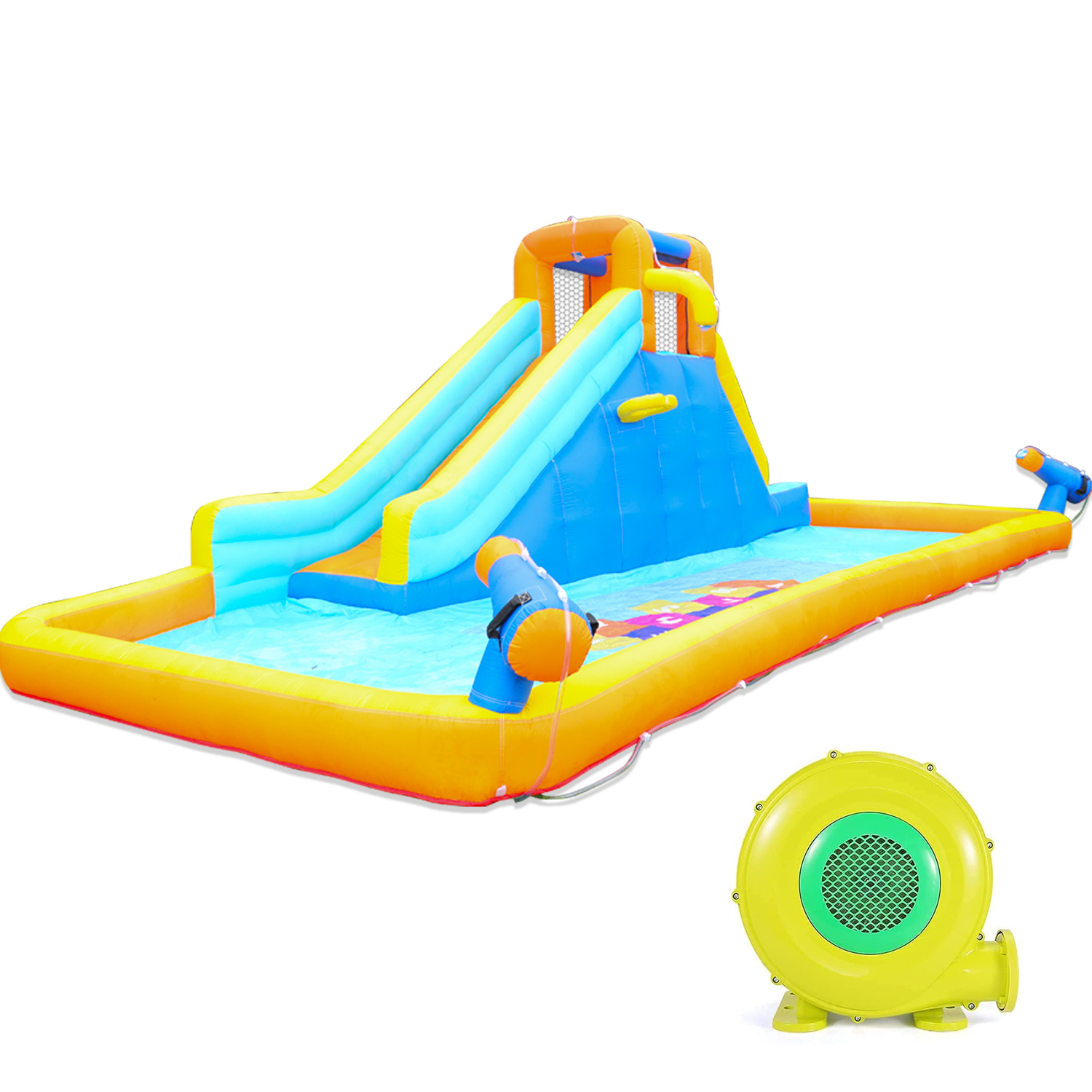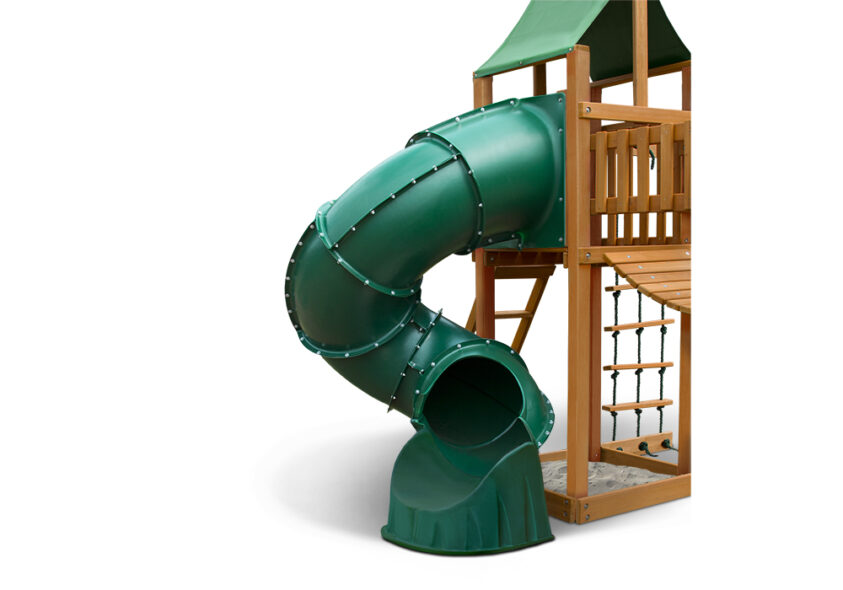
Add Some Thrills to Your Park With These Fun and Engaging Playground Equipment
Playground equipment is designed to encourage children of all ages to engage in activities that build cognitive, social and physical skills. These activities are often referred to as gross motor play because they are aimed at building strength, coordination and focusing.
Common play elements include swings, slides, merry-go-rounds and playground climbers. However, many parks incorporate unique elements that spark imagination and offer a variety of challenging experiences.
Slides
Slides are a fun way to add some thrills to your park. Children love them because they provide an immediate rush that other playground equipment doesn’t offer. Swings, for instance, require a few minutes of building momentum before kids reach an exciting height.
Slide play is also a good way to encourage children to engage in physical activity. This is because slides take a lot of energy to climb, slide, and repeat. That means kids practice a lot of upper and lower body strength as they attempt to make the fast trip to the bottom.
They’re also a great way to encourage social interaction with other children. If multiple kids use a slide at the same time, they can learn to share it and communicate with each other as they wait their turn. This can help develop positive social skills such as patience and tolerance.
There are several different types of slides for use in parks, so it’s important to choose the right one for your children’s needs. The most important thing to look for is the safety area, or exit region, at the bottom of the slide. It should be wide enough to allow children a safe exit and be made of rounded or curved edges to prevent cuts and injuries.
Another important factor is the surface material of the slide. If the slide is placed in direct sunlight, it can become hot and can cause serious contact burn injuries to children’s hands, feet and buttocks.
In addition, if the slide is located in a shaded area, it’s also less likely to be exposed to direct sunlight and be hot enough to cause injuries. The slide should also be properly anchored and have proper handrails to keep it stable and safe.
There are a variety of slides that can be used in commercial playgrounds. Some of them are covered tube park equipment slides, while others have a straight or sleek design. However, all slides should have a horizontal exit region that allows children a level, comfortable transition from the seated to standing position.
Spring Riders
Spring riders are a great way to engage children in a fun and engaging activity that will build their muscle strength, improve their balance and strengthen their core muscles. They are also an excellent way to encourage creative play.
These pieces of playground equipment are often made out of an industrial-strength metal spring that allows children to rock back and forth as they bounce, bob and move. They are a popular playground element for kids of all ages and are also easy to install.
A spring rider is a great way to add motion to the play area and can be made from several different shapes and sizes. Some spring riders are made to resemble animals and vehicles.
Animal spring riders give kids a chance to pretend they are riding on the back of a frog, rabbit, pony or other friendly animal. These toys can spark their imagination and encourage them to learn more about these animals.
Vehicle spring riders are also a great way to introduce children to the world of transportation. These toys are shaped like cars, trucks and motorcycles, and they can be ridden on by two kids at a time.
Boat spring riders are another great option to offer your children a chance to explore the world of water. They can pretend to be captains on a pirate’s quest or explorers in search of a new land.
Some spring riders are molded to specific shapes, like the motorcycle mold or shark mold. These shapes help to add realism to the play experience.
These spring riders also provide an opportunity for kids to work together and build their social skills. Collaborative play helps kids learn to think outside of themselves, to see and consider multiple points of view, and to respect other children’s feelings. These are skills that they will need for the rest of their lives.
Sensory Panels
Sensory panels provide a fun, engaging space for children to explore their senses through various activities. These panels are designed to help kids develop cognitive, tactile, sensory/motor, emotional/social and language skills through play.
The different components of the panel provide differing textures, allowing children to experience the sensation of touch while exploring their senses in new ways. They also allow children to control how fast they receive auditory input while interacting with the different sounds on the panel.
These panels are a great way to engage children of all abilities and provide them with a sensory experience that they will enjoy for years. They also offer a variety of opportunities to develop motor planning and social/imagination skills as children are encouraged to work together and play “through” the different visual panels on the panel.
Unlike other park equipment, sensory panels are not only a fun and interactive activity for kids but can be used as a learning tool to teach them about how their bodies move. The mirror panels encourage children to interact with their reflection and understand cause and effect while the music wall stimulates the auditory system to provide therapy and development for kids with auditory processing disorders or autism.
This is the perfect park equipment for parents of children with special needs and can also be used to develop communication skills between teachers and their students by tracing the different shapes on the panel. This is a great way to develop thinking and concentration as they try to form the different shapes on the panel.
As with all types of park equipment, the right sensory panels for your playground are important. You want to make sure that the different stations and activities on each of the panels will be enjoyed by all children of varying park equipment abilities and that each child will have their own unique experience on the playground.
If you are looking for a more permanent solution to your sensory needs, consider a sensory panel that can be installed inside or outside of your playground. These panels are a great option for playgrounds with limited space because they can be installed quickly and easily, providing your kids with an interactive and educational experience that will keep them coming back.
Musical Instruments
Musical instruments are an exciting addition to any playground, providing an environment that encourages creativity and improvisation. They are a great way to promote socialisation and positive interactions while having fun with friends. They also help to develop cognitive development and reasoning skills, which are essential in children’s education and later in life.
There are many different types of musical instruments, each with its own unique characteristics and sound. These include percussion instruments, wind instruments and keyboard instruments.
Music is an important part of our culture and it has a huge impact on our lives. It is the main way in which we express ourselves and create memories, and outdoor musical instruments provide an opportunity for people of all ages to do so.
As a result, musical instruments are found in almost all cultures and periods of history. Scientists have discovered clay drums and shell trumpets that were used thousands of years ago by some of the earliest humans.
Throughout time, the design of musical instruments has been affected by factors such as the availability of materials, technological skills, mythic and symbolic preoccupations, and patterns of trade and migration. For example, residents of Arctic regions may make musical instruments from bone and skin, while people in tropical regions use wood and reeds.
In academic study, the most commonly used method for classifying instruments is called organology, which examines the physical properties of an instrument, how it is played and how it produces sound, its range, and its place in an orchestra or other ensemble.
The diversity of musical instruments is partly a product of their historical development, but they are also influenced by modern manufacturing techniques. For example, plastics have made it possible for manufacturers to make many instruments of all sizes and shapes.
Another factor in the evolution of instruments is the use of metals. These have enabled the production of high-quality musical instruments at an affordable price.
Traditionally, musical instruments are crafted from wood. The wood is usually cut from trees, but sometimes it can be manufactured from other sources, such as bamboo or reeds.


